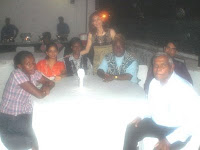
By Yvonne Bekeny in Finland
Gender equality in the Scandinavian countries is a given and manifest reality in almost all aspects of socio-political and economic life in that part of Europe. Family policies are gender sensitive oriented and parenthood policies are instituted such that gender relations are significant at least on the symbolic level. The extent to which this happens in actual sharing of tasks between mothers and fathers is still a question to be researched? Child rights including the rights to provision and care by both parents have been instituted. Scandinavian policies have undergone changes over the years to ensure fathers opportunities to take care of their families (Eydal, B. 2008). Although the mother is ‘the primary parent…the father can be a visiting care assistant’ (Lammi-Taskula in Ellingsater & Leira, 2006). Transferring part of parental leave is negotiated by the parents with no explicit suggestion to change the status-quo of gender relations. The mother’s primacy in childcare remains unchanged. Norway, Sweden and Iceland, have a more clear-cut orientation in promoting father care and roles sharing between women and men in infant care. Lammi-Taskula states that ‘Finland and Denmark on the other hand have vague positions in striving for gender equality in promoting father care’ (Lammi-Taskula in Ellingsater & Leira, 2006). Fathers take only a small portion of the whole parental leave period in all Scandinavian countries. Nonetheless, these gender balanced duties seem to be conditioned by socio-economic factors in the countries rather than by policy claims. There is a variation within the countries themselves and within the nature of employees; white-collar, blue-collar, minority, well-educated parents all have different views about sharing of duties equally over childcare. Lammi-Taskula maintains that “for large numbers of Nordic parents, unverified assumptions…about economic consequences of equal sharing of parental leave as well as cultural conceptions of gender and parenthood, especially motherhood, hamper negotiations both in the family and in the work place. Unreflected, unequal gender relations are naturalised and remain unchallenged” (Lammi-Taskalu in Ellingsater 2006).
These observations raise questions of the nature and limits to gender equality that the Scandinavian countries can declare. This idea is even more illustrated in the Norwegian context where parental leave arrangements are usually classified as policies enhancing gender equality. However, parental leave can be ambiguous with regard to gender equality objective, both regarding policy rationale and policy impact (Ellingsater in Ellingsater & Leira 2006). National variations of parental leave arrangements actually reflect different purposes, and generally are geared towards encouraging women to stay at home and promoting gender equality by supporting mother’s employment rather than shared responsibility in childcare. This idea is further substantiated by Boje (2006) who posits that even if mothers in all Scandinavian countries have taken up employment in large numbers, the traditionally gendered pattern of responsibility for child care remains in the large majority of families. In his article, he observes that although Denmark and Sweden seem to have the most equal division of caring responsibilities, even ‘the strong political commitment to equality has not fundamentally changed the gendered division of childcare. ‘Progressive and women friendly policies concerning work and family might modify the prevailing gender order but more profound changes can only be accomplished through comprehensive changes in norms and values concerning gender roles ( Boje in Ellingsater & Leira, 2006). Hence, looking at the above analysis it can be said that the question of gender roles in childcare in the Scandinavia is almost still a myth and in as much as the state would want to achieve gender equality in almost all spheres of life, the issue of gender equality in childcare is still a challenge to these states. Eydal (2008) remarks that if this myth could become a reality pretty soon, the new generation of children born in the family where both parents take care of children, will be the ones to break the vicious cycle of gender inequality.



